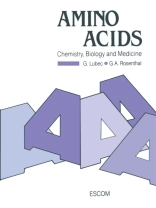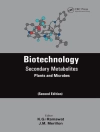There is little wonder in the fact that the investigation of amino acids is of fundamental interest to scientists from so many diversified fields. If amino acids were only basic constituents of enzymes as well as structural and other proteins, this property alone would elevate them to real scientific importance. Added to this role, however, is their ability to serve as building blocks for the production of many classes of secondary metabolites. They can support the biosynthesis of a myriad of natural products including nonprotein amino acids, cyanogenic glycosides, phar- macologically active alkaloids, certain phenols, purines and pyrimidines, nucleic acids, condensed tannins, lignins and other metabolites. The approximately twenty or so amino (and imino) acids that comprise proteins are well known; less familiar are what is now approaching 600 nonprotein amino acids that have been isolated and characterized from plant, fungal or animal sources. Investigations of the protein amino acids have proven of outstanding value in enhancing our understanding of a variety of physiological and neurological topics that affect human health and well being. Amino acids are used to probe inhibitory and excitatory transmission receptors in the brain. They contribute to our understanding of epilepsy, development of anti-epileptic drugs, production of novel y-arninobutyric acid uptake inhibitors, and acute and chronic neurodegenera- tive disorders.
G. Lubec & Gerald A. Rosenthal
Amino Acids [PDF ebook]
Chemistry, Biology and Medicine
Amino Acids [PDF ebook]
Chemistry, Biology and Medicine
Acquista questo ebook e ricevine 1 in più GRATIS!
Lingua Inglese ● Formato PDF ● ISBN 9789401122627 ● Editore G. Lubec & Gerald A. Rosenthal ● Casa editrice Springer Netherlands ● Pubblicato 2012 ● Scaricabile 3 volte ● Moneta EUR ● ID 4717902 ● Protezione dalla copia Adobe DRM
Richiede un lettore di ebook compatibile con DRM












